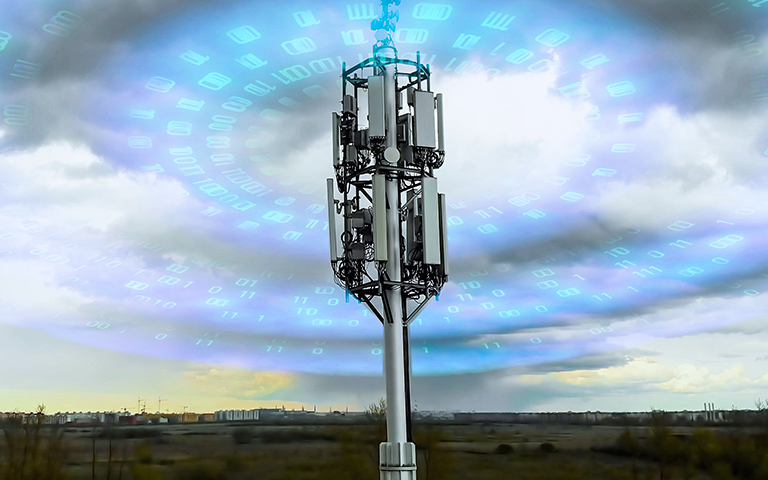What is LTE connectivity?
LTE (Long-Term Evolution) is a fourth-generation (4G) wireless broadband standard. Of particular value to businesses, this standard has given rise to several evolved technologies (notably, LTE-M and NB-IoT), designed to make it easier to deploy IoT and M2M devices efficiently and at a lower cost.
Read on to discover how LTE fits into the wider connectivity landscape, and to understand the difference between the main IoT-focused LTE variants.
What is LTE Connectivity?
LTE connectivity dates back to the early 2000s and was driven by the rapidly advancing smartphone market. The telecoms industry realised that for users to get the most out of data-hungry features such as HD streaming and gaming, the current third-generation (3G) networks would need an upgrade.
As its name suggests, LTE involved an evolution of existing network technology rather than building whole new infrastructure:
- It offers considerably higher bandwidth than 3G, enabling much faster access to content and applications.
- It also has lower latency, which boosts performance on time-sensitive applications such as video streaming.
- Signal penetration is also stronger compared to 3G, resulting in better indoor coverage.
- LTE data rates can be up to 15 times faster than 3G. A newer version of LTE (LTE-A) offers even higher data rates, making it three times faster than the original LTE.
What is 4G LTE?

You have probably seen commercial connectivity services referred to variously as ‘4G’, ‘LTE’ and also ‘4G LTE’. It’s useful to unpack this terminology.
As with other generations of wireless connectivity (e.g. 3G and 5G), the International Telecommunication Union (ITU) sets out the standard for what constitutes a 4G service or technology. Under the ITU’s 4G standard, networks need to have a peak of at least 100 megabits per second for mobile use, and at least 1 gigabit per second for static devices.
The ITU stipulates the rules on the minimum requirements for any service using that ‘4G’ label, but it’s up to the carriers to choose a technology to bring their service up to that level.
LTE happens to be the most popular technology of choice for this and the majority of network providers have chosen to adopt it because it was seen as the most effective and efficient way to enhance their existing network technology.
Assuming it’s being marketed accurately, if a service is labelled ‘4G LTE’ it means the service meets the ICU’s 4G performance levels, and that LTE is the technology deployed to achieve this.
How does LTE work?
LTE was specifically designed to boost the data transfer rates offered by existing 3G technologies.
It uses 3G network architecture as a starting point but makes that architecture simpler and more efficient. More specifically, on a 3G network, a unit called a radio network controller (RNC) controls NodeB base stations on the network. LTE networks are equipped with embedded control functionality which removes the need for an RNC altogether. For users, this streamlined architecture results in quicker connections and higher data transfer rates.

What’s the difference between LTE and LTE-M?

LTE-M is one of several IoT-focused LTE-based variants.
LTE was originally developed with smartphones rather than commercial IoT usage in mind. However, over the last few years, LTE has given rise to evolved low power, wide-area network (LPWAN) technologies designed for industrial, commercial and consumer-facing IoT projects. These include:
- LTE Cat M or LTE-M (Long-Term Evolution for Machines)
- LTE Cat NB or NB-IoT (Narrowband IoT)
- LTE Cat-1
LTE Cat M (aka LTE-M)
This offers bandwidth speeds of up to 1 megabyte-per-second for both uploads and downloads, as well as a very low latency of 10 to 15 milliseconds (latency refers to the time it takes for data packets to travel between two points). LTE-M is useful for applications that require mobility and relatively frequent data transfer, including asset tracking, security, fitness monitoring and retail payment solutions. Low latency rates mean that this category can also support voice functionality in applications such as assisted living alert devices.
LTE Cat-NB
LTE Cat-NB/NB IoT (Narrowband IoT) has typical download speeds of 0.07 Mbps and upload speeds of 0.03 Mbps. It has a relatively high latency rate, in excess of 1.6 seconds, making it best suited for applications making intermittent and small data transmissions where latency is not an issue.
Cat-NB offers impressive connection density, long-range support and signal penetration, making it a good choice for indoor usage and IoT projects spanning very long distances. Popular use cases include smart utility meters and smart home technology, industrial and agricultural monitors and sensors.
LTE Cat-1
LTE Cat-1 networks offer a high data transmission, including data streaming throughput of up to 10 Mbps. They also offer low latency and broad global coverage — making this LTE variant well suited to support feature-rich IoT devices and data-intensive tasks. Uses include video surveillance, digital signage, retail kiosks and consumer electronic devices.
What are the benefits of 4G LTE?
Standard 4G LTE networks can offer a useful connectivity option for highly data-intensive applications such as complex surveillance systems and AI-driven technologies.
However, for the vast majority of IoT deployments, it tends to be the 4G LTE variants that offer the most appropriate connectivity solutions. Benefits of these include the following:
Supporting a range of use cases
Your IoT project may involve a large volume of sensors scattered over a wide area, each transmitting or receiving data relatively infrequently, in which case an LTE Cat-NB network might be suitable. If your project requires voice, SMS or has mobility requirements, then Cat-M is more suitable. Alternatively, devices may require support for the ongoing transmission of data-intensive content, making CAT 1 a good option.
With multiple LTE variants available, you can balance requirements such as performance, coverage and battery life to select the most efficient and cost-effective option for your business.
Ease of management
Cat-NB and LTE-M are particularly energy-efficient, supporting innovations such as wake-up receivers. It means the transmission and receipt of data consumes very little power, and in fact, many devices can be deployed in the field for up to ten years on the same battery. LTE-M and Cat-NB also offer effective penetration into buildings and even underground locations. This can significantly reduce the burden of device maintenance and management.
A natural evolution from 3G
LTE offers high data bandwidth, low latency and wide coverage. Its popular IoT variants are supported by both network providers and hardware manufacturers across the globe. There are some operator dependencies around power saving modes and roaming however. As 2G and 3G networks face sunsetting, migration to one of these networks may make solid business sense for your long-term IoT strategy. Wireless Logic understands both the benefits and the challenges of adopting these newer technologies.
Are you still curious about LTE-M connectivity? Read our blog: Deciphering the Top 6 Questions About LTE-M Connectivity
Find out more
For an expert assessment of your connectivity needs and to discover the best fit M2M options for your business, speak to Wireless Logic today.
Learn more about our connectivity solutions for a wide range of use cases here.

